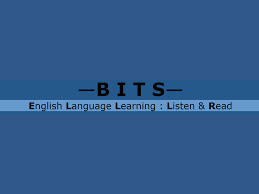
8 ESL Audio Story Websites
Listening skills are important.
I know it. You know it. Your students know it.
But how can you make listening practice engaging?
The key is to spark your students’ interest with something more exciting than those dull-as-dishwater dialogues.
A fantastic way to do this is with audio stories.
They’re versatile, accessible and usually short—factors that make them extremely useful in the world of ESL.
Contents
- Why ESL Audio Stories Are Perfect for Your Classroom
- 8 Websites to Find ESL Audio Stories
- ESL Listening Activities Using Audio Short Stories
Download: This blog post is available as a convenient and portable PDF that you can take anywhere. Click here to get a copy. (Download)
Why ESL Audio Stories Are Perfect for Your Classroom
- Through short stories, students will gain much needed exposure to English conversation. Audio stories provide a natural voice, complete with natural intonation and expression.
- A gripping topic or juicy storyline will ensure students’ investment in a listening exercise. If they want to know whether Manny gets back from the moon or if Jane and Larry get together again after their disastrous first date, they’ll have to concentrate! Choose something relevant and fun, and your students will be begging to hear how the story turns out.
- Audio short stories don’t give students the luxury of being able to infer meaning from visual action, gestures or lip movements (unlike movies or TV shows). And unlike listening dialogues, audio short stories have a proper plot, providing invaluable practice in understanding situations and events, all based solely on aural comprehension.
- The subject matter of an audio short story can be tailored to suit the interests of your students. They can also be used to spark discussion on a particular topic.
- Students can access them on their own as a brilliant way of practicing listening skills outside of the classroom. Listening to an audio short story is perfect for those busy students on the go, who can simply listen while out and about.
- Audio stories can easily be incorporated into any lesson plan. Many of them are under 15 minutes long, so you can easily create a lesson based on the grammar, vocabulary and content of the story. They can also be used as a lead-in to the topic of the lesson, or as a wind-down or reward at the end.
- There’s an endless variety of audio stories online—and many of them are free. No matter the type of learners you’re dealing with (beginner or advanced, kids or adults), you’re bound to find suitable material for them.
8 Websites to Find ESL Audio Stories
1. LearnEnglish Kids: Short stories
Despite its name, this website isn’t only suitable for children. It can also work for adults who are completely new to the English language. Since this is from the British Council, the stories are read with a British accent and at a speed learners can follow.
Each story comes with a preparation task, a game, supplemental documents and a discussion question, making it easy to prepare lesson plans from this website and tweak the lessons as needed.
2. ManyThings: American Stories for English Learners
On this website, you’ll find 57 short stories, each averaging 15 minutes in length and totaling up to 14 hours of listening.
The stories are authored by some of the most famous writers America has produced, including Washington Irving, Jack London, Edgar Allan Poe and Mark Twain. The text is animatedly read and accompanied by music. Some of the stories are tagged “[Listen and Read Along …],” though these links seem to be broken.
Before you play any of these stories in class, make sure you give them a quick read first to ensure that they’re appropriate to your students’ level.
3. ESL BITS
For classroom purposes, you can have your students listen to the short stories section. If your students are up for longer material, they can also check out audiobook versions of classic novels and some of the most popular books to come out in recent years.
The short stories are suitable for intermediate and advanced learners, and the speed of the audio can be adjusted on the website itself.
You’ll find works by famous authors such as Anton Chekhov and Raymond Carver, all with a read-along option. The longer stories are split into listening sections of around 30 minutes long.
4. ESL Yes
ESL Yes claims to have around 1,600 free ESL audio stories in its library. As of this writing, the homepage contains links numbered one to 19, and the stories are in items number three to five and items seven to 10.
Children and beginners will benefit the most from the stories marked “Easy Stories,” while upper-level learners will likely enjoy the ones simply labeled “Short Stories.”
Each story comes with a read-along option, as well as a vocabulary section and activities to help your students solidify what they’ve learned. For example, they can fill in the blanks, do a crossword puzzle, unscramble a mixed-up sentence and type dictation.
5. Linguapress
Linguapress’ short stories are aimed at B1 (intermediate) to C1 (advanced) learners. Each of the stories come with a brief description, language level, word count and information on supplemental materials like lesson plans, interactive exercises and worksheets.
The read-along text includes a brief introduction to each story, as well as highlighted words to indicate new vocabulary for your students to learn. They also come with illustrations that serve to break up the text and make the story more visually appealing.
6. ESL Fast
ESL Fast has a little over 600 audio stories divided evenly into six levels. When listeners hit the “Start Reading” button on each story, the text will be highlighted with the words corresponding to the audio that they must read along with. If the story is being read too fast, they can always hit the “Stop” button.
Some of the higher-level texts include an option to search Google Images, translate the text into the listeners’ native language and do speed training. All of the stories come with a vocab list and activities like fill-in-the-blanks, sentence rearrangement and taking down dictation.
7. Learn English Through Story For Free
If your students would like their ESL audio stories to be accompanied by videos, look no further than this aptly-named YouTube channel.
Even though most of the videos are around an hour to a couple of hours long, they’re not as intimidating to learn from as they look.
The videos are divided into chapters, each consisting of carefully-read blocks of paragraphs. That means your students can easily follow along—and if the story is engaging enough, they might easily forget how long the video really is!
Another place you can find stories with videos is the language learning platform FluentU.
8. The Moth
If you want to challenge your most advanced students, try using a story from this website. It features an always-growing collection of “true stories told live.”
While the audio (and sometimes video) short stories lack transcripts, this is a top-notch source for authentic stories and fantastic storytelling.
ESL Listening Activities Using Audio Short Stories
As you’ve seen, some of these ESL audio story websites come with suggested activities that can save you a lot of time planning your lessons.
But if you happen to use a resource that doesn’t have supplemental materials, don’t fret! Here are some of the most common activities you can ask your students to do after listening to audio stories:
- Fill in the blanks: Using the story’s transcript (if it’s available), remove approximately one word from every other sentence, leaving blanks in their place. If the class is lower level, you can provide a word bank at the top of the sheet. Give this worksheet to your students, and have them read it for a few minutes before they begin listening. Then, while the story is playing, have students fill in the blanks. If the students want to, let them listen to the short story again. You can go through the answers as a group, listening to the story once more and pausing at each blank.
- Master memory: Tell the students that they’re going to write down the main events of the story after listening to it. Play the short story, making sure no one writes anything yet. Afterward, ask the students to write a list of at least five events they can remember from the story. These could include what happens at the beginning, a plot twist, a character interaction and how the story ends. The more detail, the better!
- Order the events: Give each student a set of strips, with a sentence or two detailing an event on each strip. Allow time for your students to read each one, or read them together as a class. While listening to the story, students should try to put the events in the correct chronological order.
- Buzz words: Give students a vocabulary page with anywhere between 10 and 30 words, depending on the class level and the length of the short story they’ll be listening to. Go through the words one by one, and briefly discuss their definitions. Then, as your students listen to the story, they can check off words from the list as soon as they hear them. You could also turn this into a game where your students raise their hands or clap whenever they hear the buzz word. First one gets a team point!
- Multiple choice: Give students a worksheet with approximately 10 questions on it, each with three possible answers. The questions can be about defining events in the story, character decisions or tiny details. Allow them time to read through the options before playing the short story, and briefly talk about any important points. As they listen, your students will choose from the multiple choice answers. Play the story again to go through the answers, pausing whenever these crop up.
- Character quiz: Listen to the entire short story, then give students a worksheet with a list of character traits and decisions. Students must pick the correct one for the protagonist of the story. Listen to the story again to give students a chance to review their decisions before going through the answers as a class.
- Plot quiz: Students listen to the short story once or twice, depending on their level. Afterward, split them into two to four teams and have a game show. Each team has a chance to answer a question. If the team gets it right, they get a point. If they get it wrong, the question moves to the next team.
- Beginning, middle, end: Lead a discussion about what constitutes the beginning, middle and end of a story. Listen to the short story once or twice if necessary, and split the class into groups of no more than four. Have groups discuss and write down the main events that make up the beginning, middle and end of the story. Review what they wrote with the whole class to see if students have similar ideas.
These eight websites are great places to start when searching for audio short stories to use in your ESL class. You can use these to supplement the usual ESL listening practice sites.
Also, there’s no reason why you should stop at short stories. Take a full audiobook and split it up into bite-sized chunks, using the same activities and tips shown here.
Whatever your students are interested in, there’s certainly something out there for them in the world of audio short stories. So get searching now to provide them with some much-needed aural educational entertainment!
Download: This blog post is available as a convenient and portable PDF that you can take anywhere. Click here to get a copy. (Download)









